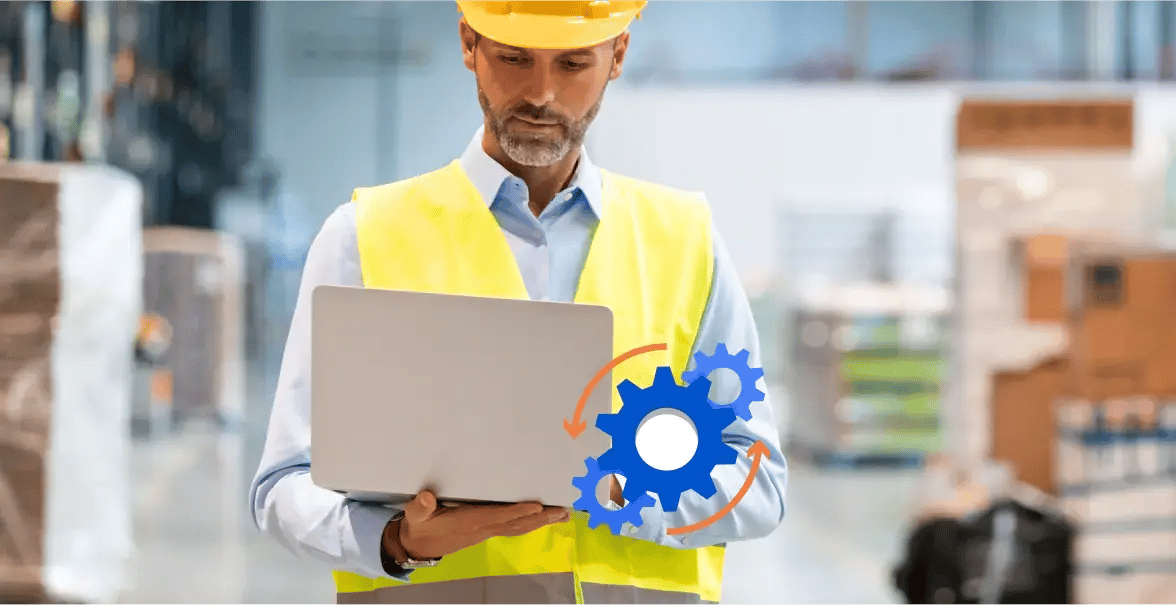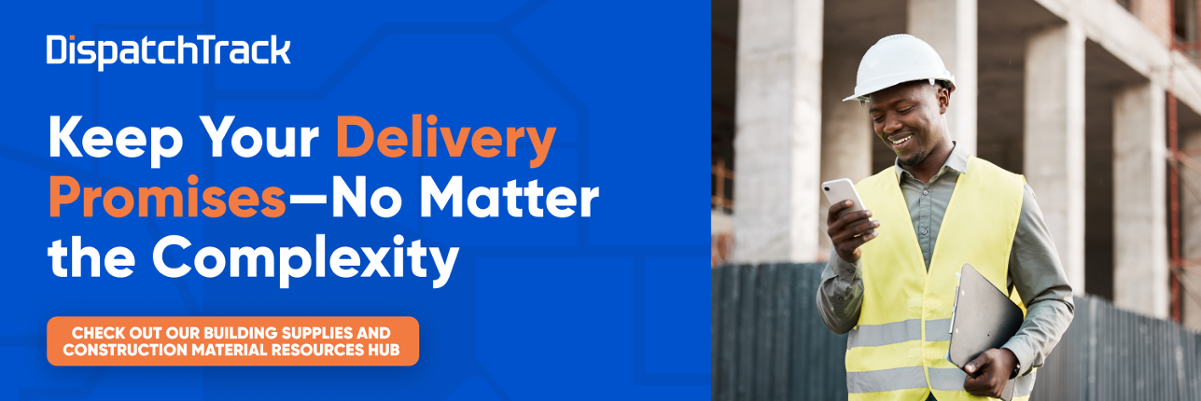For several years now, plumbing and HVAC suppliers have had to stay agile. The supply chain disruptions that started in the pandemic have continued to impact the landscape, and economic conditions have made business-as-usual a thing of the past. 
With home sales relatively low in recent years, many of the traditional opportunities distributors take advantage of are harder to come by—at the same time, the Inflation Reduction Act has piqued consumer interest in heat pumps and other green technologies. With more changes like these potentially coming down the pike, the ability to be nimble with the way you administer your supply chain is more important than ever.
More specifically, the last mile of the supply chain has never been more important. Not only does it traditionally eat up around half of total logistics costs, it's also where your promises to customers are put to the test.
HVAC, plumbing, and other building materials suppliers know that customer expectations are changing rapidly, and that applies to the delivery experience as well. Even commercial clients’ expectations will be informed by the last mile deliveries that they experience to their homes (e.g. of furniture, mattresses, etc.). This means that the ability to provide a smooth, transparent, and connected experience is just as important as ensuring efficiency. Delivery NPS will be an increasingly important stat in the industry.
Here’s how to optimize it:
Challenges in Effective Plumbing and HVAC Delivery
You can’t optimize what you can’t measure. So what are the measurable areas where you can address delivery NPS directly?
- On-time delivery rate: Studies consistently show that on-time deliveries are crucial to your brand reputation, and this is just as true in HVAC and plumbing as anywhere else. For commercial clients especially, on-time delivery means that you keep their projects on track and potentially even save them money.
- Delivery lead time: Are you able to fulfill same-day and next day delivery and service requests from important customers? If you are—i.e. if you’re able to significantly shorten your delivery lead times when you need to—your customers know that they can count on you when they have an immediate need.
- Order confirmation rate: This might not seem like a service you can offer to your customers in the same way that the first two KPIs on the list are—but this can be an effective proxy for how well you’re connecting with your customers. When your customers have the opportunity to confirm their orders, you can easily separate the likely exceptions before dispatch technicians or load materials into trucks.
- Unplanned return rate: Over-ordering isn’t uncommon across the building supplies space in general, so unplanned returns are fairly frequent occurrences. That said, you can decrease this number by confirming orders with customers before you load them into vehicles.
How to Deliver On-Time, Every Time
One of the most impactful ways to tackle the top two KPIs that we listed out above is to ensure consistent on-time delivery by using next-generation route optimization software. What makes a given piece of route optimization software qualify as next-generation? For starters, it should leverage AI and machine learning to turn huge amounts of delivery data into increased ETA accuracy.
At the same time, your route optimization platform should enable you to do your routing within a matter of minutes, rather than hours. This enables you to move back your order cutoff time and potentially accommodate more requests for same day and next day deliveries or services.
When you can combine faster, more efficient route planning with more accurate ETAs, suddenly your last mile is transformed. You don’t just improve those two particular KPIs (though that’s obviously impactful as well), you create a more agile and intelligent process from end to end. Here, you’re in a position to get the most out of your capacity even when your order activity is chaotic and your customers need quick turnarounds—and you’re able to do that without running the risk of late deliveries.

When it comes to boosting your delivery NPS, this added level of agility can be crucial. When you’re confident that you can deliver at the right time, you can confidently take on more orders and you can more easily manage by exception. After all, when most things are running smoothly, it’s much easier to manage the few things that aren’t.
Ultimately, your customers will feel that they’re able to trust you and that your delivery promises are worth something. This will encourage repeat ordering—especially in cases where they know they need a particular pallet of plumbing supplies at a precise time to keep their project running on schedule.
Next Generation Customer Experience
Route optimization of the kind we’re describing helps plumbing and HVAC distributors to deliver on time, every time, which goes a long way towards boosting NPS. At the same time, that’s not the only way to impact customer experience—in fact, it’s only the starting point.
Like we mentioned above, your commercial clients are likely to expect a certain kind of delivery experience based on deliveries they’ve experienced in their personal life. It might seem to them that there’s no reason that a shipment of plumbing supplies couldn’t have the same level of connectivity, transparency, and real-time tracking that a new mattress delivery has—and they’d be 100% right.
From our perspective, introducing a more B2C-like customer experience into the mix is going to be one of the most crucial trends in building supplies delivery more broadly in the next few years—and especially for plumbing and HVAC suppliers.
So what does the next generation of customer delivery experience look like?
Here are a few critical elements:
- Frequent, flexible notifications: You’ll obviously need to find the right cadence for your particular use case, but you’ll want to keep customers in the loop about when to expect their deliveries via text and email at multiple touchpoints (e.g. schedule confirmations, route start messages, etc.)—all with your branding and brand voice.
- Customer self-scheduling: If possible, enabling customers to schedule their own deliveries for the right time for them can be a huge boon to your customer delivery experience. The trick is to make sure you’re giving your customers options that work with your existing schedule, capacity requirements, and existing zones.
- Two-way communications: A contractor running a job site might be less likely to call in with questions than a homeowner waiting on some DIY supplies—but neither one of them really wants to make a call if they can help it. When you’re able to offer live, streamlined two-way chatting with customers you can make life easier for your team and your customers at the same time.
- Live delivery tracking: The ability to see where a delivery truck is in real time—and to see up-to-the-minute ETAs—can work wonders for customer delivery experience. It increases confidence on the customer side (and reduces the need to call in) and helps ensure transparency across the entire delivery process.
- Post-delivery follow-up: One of the keys to improving your NPS over time is to make sure you’re effectively measuring it. By sending post-delivery surveys via text as part of your regular last mile communications cadence, you can improve your uptake rates and get a clearer picture of how customers feel about the delivery service being provided to them. Once you have a baseline, you can try new things and iterate over time.
It’s hard to overstate the importance of customer experience when it comes to plumbing and HVAC delivery—it can be just as important as price as a competitive differentiator. When you can bolster your customer experience with the right tools, you put yourself in a position to boost your NPS and consistently delight your customers.